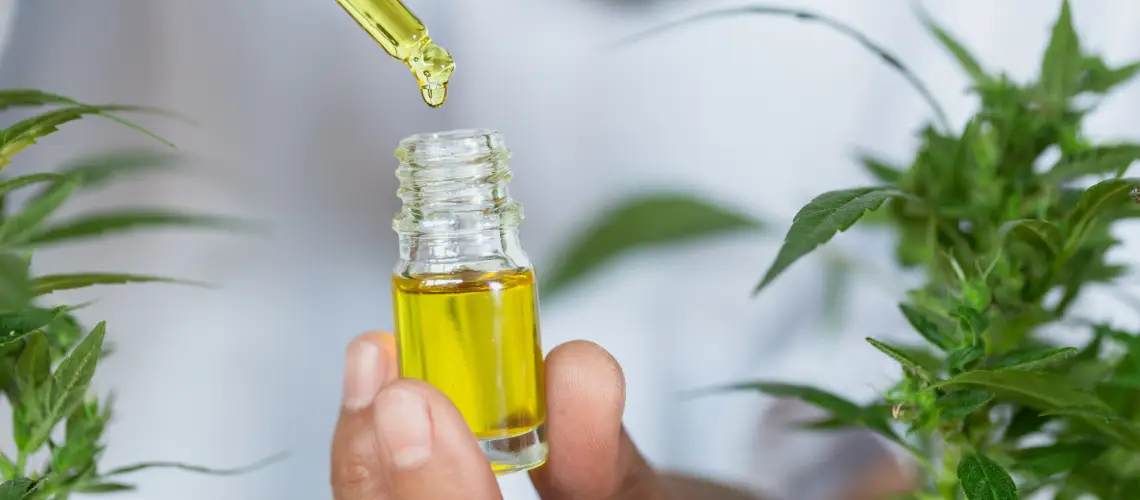cannabis and wellness
Healing with Nature
YouFind Labs
What You’ll Find Here
Personal Stories: Learn from my journey with medicinal cannabis and wellness.
Practical Advice: Tips for selecting and using medicinal cannabis products effectively.
Community Connection: A space to share and learn together.
Let’s explore, grow, and navigate life’s complexities together.
blog

Cannabis Access in Australia: A Path Toward Natural Healing
As interest in natural approaches to healthcare grows, more Australians are exploring cannabis as a pathway to natural healing. Whether it’s through regulated telehealth platforms or carefully managed treatment plans, access to cannabis is becoming more streamlined and patient-focused across the country.
The Rise of Natural Health Preferences in Australia
A growing number of Australians are moving away from synthetic treatments and turning to natural alternatives. This shift reflects a broader desire to take control of personal health by using remedies that work in harmony with the body, rather than override it.
Cannabis is now seen not as a last resort but as a legitimate option within this movement. Its unique profile—offering both THC and CBD in various ratios—provides flexibility for a wide range of symptoms, from chronic pain to anxiety and sleep disorders.
Who Can Access Cannabis in Australia?
Australia has strict but navigable rules around accessing medicinal cannabis. Patients must consult with a medical professional who determines eligibility. Once approved, patients are entered into a regulated treatment pathway.
Contrary to outdated perceptions, these aren’t “fringe” treatments. A growing number of AHPRA-registered doctors are prescribing cannabis, and professional platforms now exist to ensure that the process is safe, legal, and private.
Eligibility Often Includes:
- Chronic pain or inflammation
- Anxiety and stress-related conditions
- Insomnia and other sleep issues
- Side effects from traditional medications
How Telehealth Is Simplifying the Journey
The expansion of telehealth services in Australia has dramatically improved how people access cannabis. Instead of needing to visit a physical clinic, patients can now speak to experienced doctors from home, using secure platforms built to handle consultations, prescriptions, and follow-up care.
These services have made cannabis far more accessible, especially for those living in regional or rural areas. The convenience of telehealth has also encouraged more people to explore natural options without fear of stigma or discomfort.
Benefits of a Regulated Cannabis Program
The framework in place across Australia ensures that medicinal cannabis is:
- Prescribed by qualified professionals
- Sourced from regulated and approved providers
- Adjusted for individual needs
- Monitored for safety and effectiveness
Unlike the black market or self-medication, regulated cannabis ensures that patients know what they’re taking, why they’re taking it, and how to optimise their dosage over time.
Common Forms of Cannabis Treatments
Cannabis products in Australia come in various forms to suit different conditions and preferences. These include:
- Oils and tinctures: Often used sublingually for controlled dosing
- Capsules: Easy to ingest and discreet
- Dry flower: Used with vapourisers for fast-acting relief
- Topicals: Creams and balms for localised pain and inflammation
Each form has its own onset time, duration, and ideal use case, making it important for patients to work with doctors on finding the best fit.
The Role of Doctors and Ongoing Monitoring
One of the most crucial parts of cannabis access in Australia is the role played by healthcare professionals. These are not one-time interactions. Doctors create treatment plans that evolve over time, adapting to how the patient responds to therapy.
This ongoing relationship helps:
- Avoid overuse or dependency
- Fine-tune dosage based on feedback
- Ensure that cannabis complements (not replaces) other treatments
With regular check-ins, patients are supported through every stage of their journey, especially important for those new to alternative therapies.
Debunking the Myths About Cannabis
Despite its growing acceptance, cannabis still carries some outdated stigma. Many people assume it’s only used recreationally or that it lacks scientific backing. However, both public opinion and medical research are evolving rapidly.
Studies from around the world have begun to validate what many patients already report: cannabis can be a powerful tool for natural healing when used responsibly and under guidance. In Australia, this is reinforced by a tightly controlled system that prioritises patient safety.
Looking Ahead: The Future of Cannabis Care
With more clinical trials, increased public awareness, and stronger advocacy from medical professionals, cannabis is poised to become a staple in Australia’s natural health landscape. Its versatility and compatibility with telehealth services make it uniquely positioned to meet the needs of modern healthcare.
Future developments may include:
- Broader product availability
- Greater integration with allied health providers
- Improved data on efficacy and safety
Final Thoughts
Cannabis is no longer a fringe concept in Australian healthcare. It’s a viable, regulated, and increasingly accessible option for individuals seeking natural alternatives. Thanks to secure telehealth services, personalised treatment plans, and a growing body of medical knowledge, more Australians can explore cannabis with confidence and clarity.

Common Mistakes When Choosing Medicinal Cannabis Products
Starting your journey with medicinal cannabis can be life-changing, but it’s not without its challenges. When I first explored this treatment, I made several mistakes that delayed my progress and caused unnecessary frustration. To help you avoid the same pitfalls, I’m sharing the most common mistakes people make when choosing medicinal cannabis products and how to overcome them.
Not Doing Enough Research
When I began my journey, I didn’t fully understand the wide variety of medicinal cannabis products available. Oils, tinctures, capsules, vapourisers—the options felt overwhelming.
Why It’s a Problem:
- Choosing a product without understanding its purpose can lead to ineffective treatment.
- Lack of knowledge about THC and CBD ratios can result in unexpected side effects or insufficient relief.
How to Avoid It:
- Learn the Basics: Understand the differences between CBD (non-psychoactive, calming) and THC (psychoactive, pain-relieving).
- Explore Product Types: Research how different forms of cannabis—like oils and capsules—work and their benefits.
- Ask Questions: Speak with your doctor or pharmacist to clarify any doubts.
Ignoring Professional Guidance
Initially, I thought I could manage my treatment independently by reading articles and reviews. However, I quickly realised the importance of professional input.
Why It’s a Problem:
- Self-medicating without proper guidance can lead to incorrect dosing or selecting unsuitable products.
- Doctors understand your medical history and can tailor recommendations accordingly.
How to Avoid It:
- Consult a Specialist: Work with a doctor experienced in medicinal cannabis.
- Follow Recommendations: Trust the guidance provided and keep them updated on your progress.
- Be Honest: Share all relevant details about your symptoms, lifestyle, and concerns.
Expecting Immediate Results
I went into this process hoping for quick relief. While medicinal cannabis is effective, it isn’t an instant fix.
Why It’s a Problem:
- Unmet expectations can lead to frustration and premature abandonment of treatment.
- It takes time for your body to adjust to the product and dosage.
How to Avoid It:
- Be Patient: Understand that trial and error is part of the process.
- Track Progress: Keep a journal to monitor symptoms, side effects, and improvements.
- Adjust as Needed: Work with your doctor to tweak your treatment plan if necessary.
Overlooking Product Quality
Early in my journey, I purchased a product without verifying its quality. This mistake taught me the importance of choosing licensed and regulated options.
Why It’s a Problem:
- Poor-quality products may contain harmful contaminants or inaccurate cannabinoid levels.
- Unregulated products might not deliver consistent results.
How to Avoid It:
- Buy from Licensed Suppliers: Ensure the product is sourced from a reputable, regulated provider.
- Check Lab Testing: Look for products with lab results verifying their contents and safety.
- Seek Recommendations: Ask your doctor or pharmacist for trusted product options.
Ignoring the CBD-to-THC Ratio
The ratio of CBD to THC in a product determines its effects. Initially, I ignored this and ended up using a product that didn’t meet my needs.
Why It’s a Problem:
- The wrong ratio can result in side effects like drowsiness, anxiety, or insufficient relief.
- CBD and THC have different therapeutic effects, and finding the right balance is crucial.
How to Avoid It:
- Know Your Needs: High-CBD products are great for anxiety, while THC-dominant ones may be better for pain.
- Start Balanced: Begin with a balanced CBD:THC product and adjust based on your experience.
- Seek Advice: Your doctor can recommend a ratio based on your symptoms.
Not Considering Your Lifestyle
When I started using medicinal cannabis, I didn’t think about how the product would fit into my daily routine.
Why It’s a Problem:
- Some products require more frequent dosing or have longer onset times.
- Vapourisers may not be suitable for someone with respiratory issues, while capsules may not be ideal for quick relief.
How to Avoid It:
- Match the Product to Your Routine: Choose a product that aligns with your daily schedule and needs.
- Plan Ahead: Understand the onset time of your product and plan your doses accordingly.
- Experiment Cautiously: Try different forms to see what fits best into your lifestyle.
Not Being Open About Side Effects
Early on, I experienced mild side effects but didn’t share them with my doctor, thinking they were insignificant. This delayed adjustments to my treatment plan.
Why It’s a Problem:
- Side effects can indicate that your dosage or product type needs to be adjusted.
- Ignoring them can lead to discomfort or reduced effectiveness.
How to Avoid It:
- Track Side Effects: Write down any changes you notice, even if they seem minor.
- Communicate Clearly: Share your experiences with your doctor during follow-ups.
- Be Proactive: Don’t hesitate to contact your healthcare provider if side effects are impacting your quality of life.
Conclusion
Choosing the right medicinal cannabis product can be daunting, but avoiding these common mistakes can save you time, money, and frustration. Remember, the journey is personal, and it’s okay to take your time. Work closely with your healthcare provider, stay patient, and prioritise quality and safety.
If you’ve made any of these mistakes—or learned from your own experiences—I’d love to hear your story. Let’s continue the conversation and support one another on this journey to better health.

5 Things to Know About Medicinal Cannabis Products
Medicinal cannabis products are becoming increasingly popular for managing various health conditions. However, they can also be confusing if you’re new to them. Here are five key things to know before you start your journey.
1. Not All Products Are the Same
Medicinal cannabis products vary widely in form, cannabinoid content, and effectiveness.
Types of Products:
- Oils and Tinctures: Long-lasting effects, ideal for chronic conditions.
- Capsules: Easy to take, with consistent dosing.
- Vapourisers: Provide immediate relief but shorter duration.
Practical Tip: Choose a product based on your specific condition and lifestyle.
2. The CBD and THC Ratio Matters
The balance of CBD and THC affects how a product works for you.
- High-CBD Products: Great for anxiety, inflammation, and epilepsy.
- High-THC Products: Effective for pain relief and sleep but may cause psychoactive effects.
Practical Tip: Start with a balanced ratio and adjust based on how your body responds.
3. Quality and Safety Should Be a Priority
Always buy products from licensed suppliers to ensure safety and compliance.
What to Look For:
- Lab-tested products.
- Transparent labelling.
- Doctor or pharmacist recommendations.
Practical Tip Avoid unregulated products, as they may not be safe or effective.
4. Timing and Method of Use Are Important
The timing and method of use can affect how medicinal cannabis works.
- Vapourisers provide fast relief but wear off quickly.
- Oils and capsules take longer to work but last longer.
Practical Tip: Plan your doses around your daily routine for maximum effectiveness.
It’s a Journey, Not a Quick Fix
Medicinal cannabis isn’t an instant solution. It requires patience and fine-tuning.
What to Expect:
- Trial and error to find the right product and dose.
- Regular adjustments with your doctor’s help.
Conclusion
Understanding these five essential aspects of medicinal cannabis products will help you make informed decisions and get the most out of your treatment. Take your time, consult your doctor, and enjoy the benefits of a tailored approach to health and wellness.

How to Choose the Right Medicinal Cannabis Product
Selecting the right medicinal cannabis product can feel overwhelming with so many options available. Oils, capsules, tinctures, and vapourisers each offer unique benefits. When I started my journey, I felt lost. Through trial, error, and a lot of research, I learned what works—and what doesn’t. Here’s a guide to help you make an informed choice.
Step 1: Understand Your Needs
The first step is understanding what you need from medicinal cannabis. Different products serve different purposes.
For Anxiety
- High-CBD products are ideal for reducing anxiety without psychoactive effects.
- Products like CBD oil can provide a calming effect throughout the day.
For Chronic Pain
- THC-dominant products often work better for managing severe pain.
- Tinctures or vapourisers provide faster relief.
For Insomnia
- Indica-dominant strains or products with higher THC content are effective for promoting sleep.
Practical Tip: Start by consulting your doctor about your symptoms and treatment goals. They can help narrow down the product types that may work best for you.
Step 2: Consider the Form of the Product
Medicinal cannabis comes in various forms, and each has its own benefits.
Oils and Tinctures
- Easy to measure and adjust dosage.
- Best for sustained relief over several hours.
Capsules and Tablets
- Convenient for consistent dosing.
- Great for those who prefer a tasteless option.
Vapourisers
- Provide fast-acting relief for acute symptoms.
- Ideal for pain and nausea management.
Topicals
- Applied directly to the skin for localised relief.
- Effective for joint pain and inflammation.
Practical Tip: Choose a form that fits your lifestyle. If you need long-lasting effects, oils or capsules may be ideal. For immediate relief, consider vapourisers.
Step 3: Check the Ratio of CBD to THC
The ratio of CBD to THC can significantly affect how a product works for you.
High-CBD, Low-THC
- Provides anti-inflammatory and anti-anxiety benefits without psychoactive effects.
Balanced CBD: THC
- Combines the therapeutic benefits of both cannabinoids.
- Useful for conditions like chronic pain or sleep disorders.
High-THC, Low-CBD
- Provides strong pain relief but may cause psychoactive effects.
Practical Tip: Start with a balanced ratio and adjust based on how your body responds.
Step 4: Quality Matters
Not all medicinal cannabis products are created equal.
What to Look For:
- Products from licensed suppliers to ensure safety and compliance.
- Lab-tested products with clear cannabinoid content labelling.
- Recommendations from your doctor or pharmacist.
Practical Tip: Avoid products that don’t provide lab testing information. Safety and transparency should always come first.
Step 5: Start Low and Go Slow
One of the most important lessons I’ve learned is to be patient. Medicinal cannabis affects everyone differently.
What to Do:
- Begin with a low dose and increase gradually.
- Monitor how your body reacts over time.
- Don’t hesitate to contact your doctor if adjustments are needed.
Conclusion
Choosing the right medicinal cannabis product is a personal journey that requires time, patience, and education. By understanding your needs, consulting your doctor, and experimenting cautiously, you can find a product that works for you. Remember, your journey is unique, so take it one step at a time.